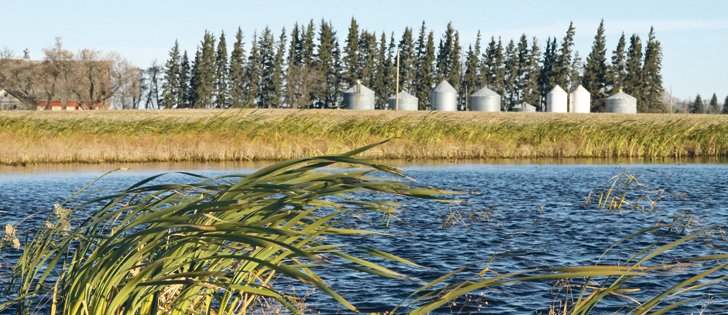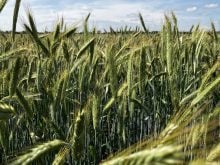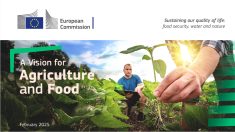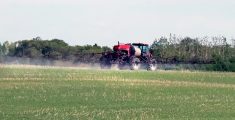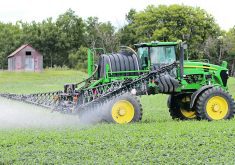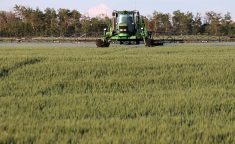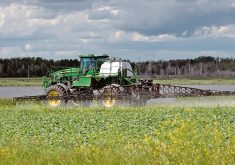Sixty-five to 70 million acres of crop goes in the ground in Western Canada every spring.
After seeding and into the summer, farmers apply tonnes of herbicides, insecticides and fungicides to control pests on those crops.
In Alberta alone, data shows that 15.2 million kilograms of pesticide active ingredient were sold or shipped into the province in 2013. About 95 percent of the pesticides were used on Alberta farmland.
However, even with the scale of the acreage and massive amount of pesticides applied, Environment Canada doesn’t routinely test ponds, wetlands and creeks across the Prairies for pesticides.
Read Also
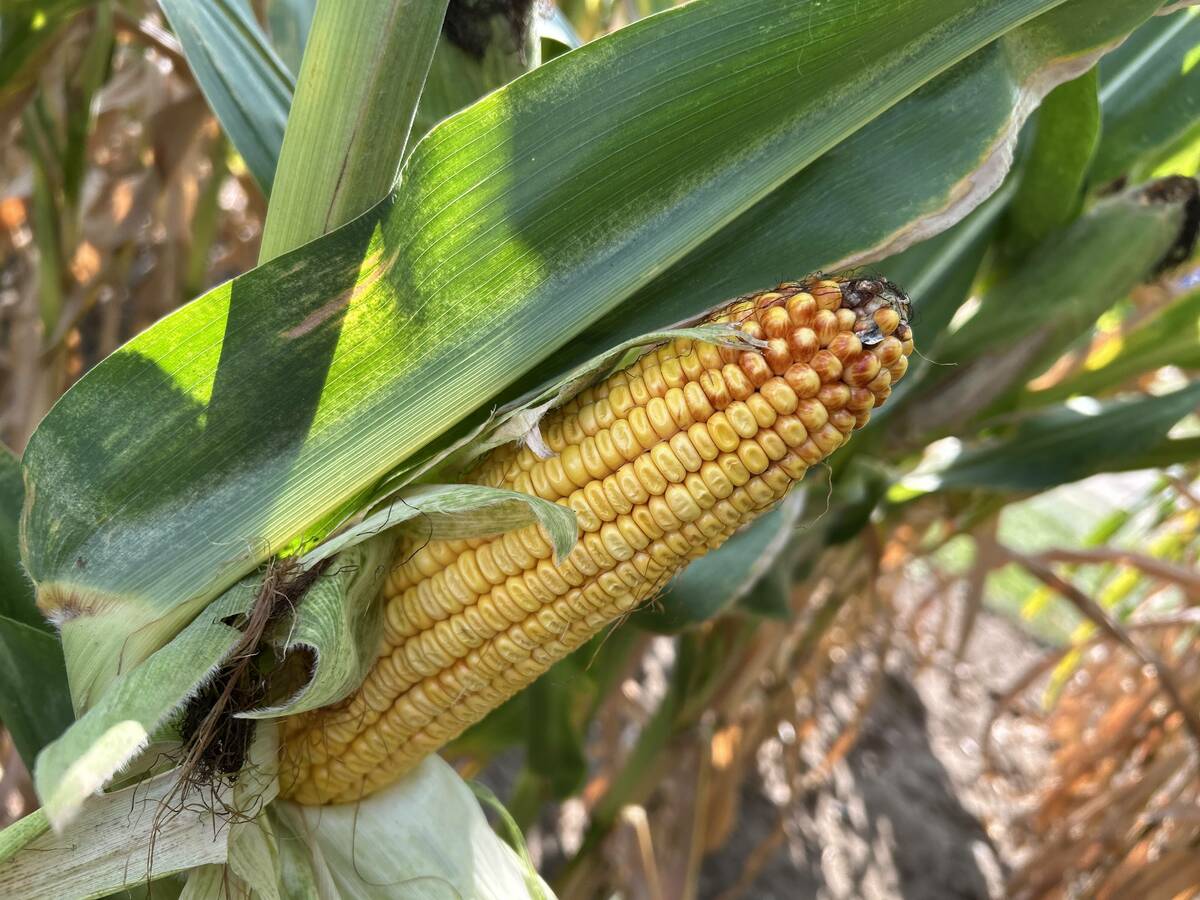
Crop estimates show mixed results
Model-based estimates used by Statistics Canada showed the 2025/26 crop year has seen increases in canola, corn for grain, oats and lentils production while seeing dips in spring wheat, durum wheat, soybeans and barley in comparison to 2024/25.
“There are no surface waters in Western Canada that don’t have pesticides in them,” said Allan Cessna, a semi-retired Environment Canada scientist who specializes in agricultural pesticides and their fate in the environment.
Cessna, who still works a day or two per week at the National Hydrology Research Centre in Saskatoon, said the federal government monitors a handful of rivers that cross provincial borders for things such as heavy metals, nutrients and pesticides.
As well, there are research programs that monitor certain industries and contaminants, such as pollution from the oilsands.
However, Environment Canada doesn’t have a consistent program to monitor prairie surface waters for ag chemicals.
Cessna was tactful in his description of the situation, but other researchers were more direct.
Paul Sibley, a University of Guelph environmental scientist, said the lack of pesticide testing in water across Canada is a national embarrassment.
“Every year I … tell my students that here in Canada we have such a poor monitoring system. I have to go to the USGS (U.S. Geological Service) website to pull down relative levels of just about any (pesticide),” he said.
“I think that, in itself, is a particularly sad indictment of the state of our monitoring capacity here in this country.”
As an example of the lack of water testing, neonicotinoid seed treatments are used on almost every canola seed that goes into the ground in Western Canada. University of Saskatchewan research has shown that neonics are collecting in wetlands across the Prairies and the concentrations of the insecticides could be harmful to aquatic insects.
Yet, John Struger, an Environment Canada scientist in Ontario who retired in December, said no one in the department is testing creeks and ponds for neonics in Western Canada.
In November, Health Canada surprised farmers and a few scientists when it proposed a phase out of imidacloprid, a neonicotinoid, over three or five years.
Scientists with Health Canada’s Pest Management Regulatory Agency said levels of imidacloprid in water bodies near agricultural land are unacceptably high, which is putting aquatic insects at risk and a threat to animals that depend on those insects for food.
The Bayer product was once the most popular insecticide in the world. In Western Canada it’s used on wheat crops to control wireworms.
Overall, it’s applied primarily to greenhouse crops, fruit, vegetables and potatoes in Canada.
In addition to the imidacloprid ban, Health Canada is reviewing two other neonics, thiamethoxam and clothianidin, to see if they’re a threat to aquatic insects.
Those two neonics are applied as a seed treatment to almost all of the corn and canola planted in Canada and a portion of soybean acres.
Since Environment Canada doesn’t have national pesticide monitoring program, Health Canada must depend on intermittent government research and testing by university scientists to gauge neonic levels in water.
Scott Teed, an ecological risk assessment expert with Intrinsik, a consultancy based in Toronto, said Health Canada relies heavily on computer models to predict pesticides concentrations in water.
“They may set up a prairie pothole surrogate in the model,” said Teed, who worked for Environment Canada for seven years.
“You might have a (25 acre) area draining into the prairie pothole and they assume the pesticide is being applied … and they predict the concentration of the water in that pothole.”
If the concentration of pesticide, forecast by the model, is a risk to insects or other species, it raises a large, red flag within Health Canada.
Teed said an environmental model shouldn’t be used to justify a pesticide ban because models can be flawed. A model should be the first step in an investigation rather than a crucial piece of evidence.
“The issue is how much faith you put into a model? And how appropriate is the scenario when you are… (making) a blanket decision, nationally, about whether or not a pesticide should be registered?” he asked.
“Making that decision at a screening (model) level is absolutely not the way to go.”
Health Canada said there are regions in Canada where “robust” monitoring data is not available, but it did have data from Central Canada.
“Environmental modelling predicted levels of imidacloprid in aquatic environments that would be expected to pose risks to aquatic invertebrates,” Health Canada said. “This was backed up by robust environmental monitoring data from several areas of intense agricultural activity in Ontario and Quebec, as imidacloprid was detected frequently in surface water at levels well above concentrations that may result in toxic effects to insects.”
In an ideal world, Canada should have a national program to monitor pesticides in water, Cessna said.
The country could be broken up into geographies, such as the Prairies, and surface water in each area would be tested every four or five years. If such data existed, scientists and ordinary Canadians would know if pesticides were causing harm or not.
“To see if there’s a change in the concentrations. Are (things) getting better? Are they getting worse?” Cessna said.
“If we don’t do the monitoring, then we don’t know that.”
A national monitoring program could be helpful for the environment and might enhance public confidence in farming.
“I do risk assessment for a living and the more data I have the better my science is,” Teed said.
“Everyone assumes that pesticides are bad. They hear that something has been banned or that there’s been a fish kill but they don’t understand the context…. If farmers can actually show that … concentrations are exceptionally low, then that would be beneficial to the farmer.”


